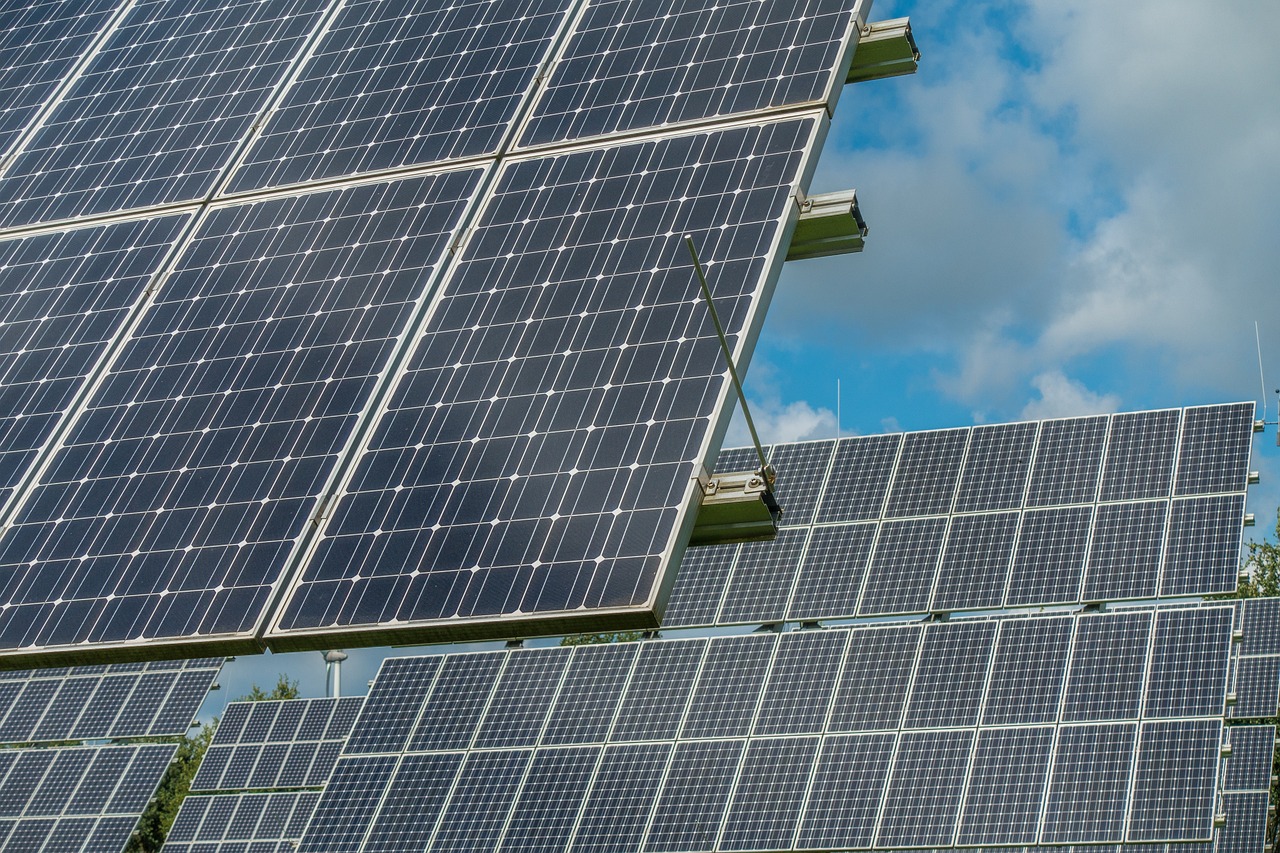
Choosing the Right Solar Panels for Your Home: A Buyer’s Guide
As the world increasingly embraces renewable energy, more homeowners are considering solar panels to reduce their energy bills and carbon footprint. But with numerous options available, choosing the right solar panels for your home can feel overwhelming. This guide will help you understand the different types of solar panels, key factors to consider when purchasing, and how to make an informed decision that maximizes your investment.
1. Understanding the Types of Solar Panels
The first step in choosing the right solar panels is understanding the three main types available: monocrystalline, polycrystalline, and thin-film solar panels. Each type has distinct advantages, disadvantages, and ideal use cases.
1.1. Monocrystalline Solar Panels
Monocrystalline panels are known for their high efficiency and sleek design. They are made from a single continuous crystal structure, which allows for better electron flow and energy conversion.
Advantages:
- Higher Efficiency: Monocrystalline panels typically offer the highest efficiency rates, often ranging from 18% to 22%. This makes them ideal for homeowners with limited roof space who want to generate maximum power.
- Durability: These panels tend to have a longer lifespan and degrade more slowly, meaning they maintain higher energy output over time.
- Sleek Appearance: Monocrystalline panels are often black, giving them a more aesthetically pleasing look, especially on modern homes.
Disadvantages:
- Higher Cost: Due to their efficiency and manufacturing process, monocrystalline panels are generally more expensive than other types.
- More Wasteful Production: The production of monocrystalline panels involves cutting silicon wafers, which creates more waste than other types of solar panels.
1.2. Polycrystalline Solar Panels
Polycrystalline panels are made from multiple silicon crystals melted together. This manufacturing process is less expensive, but it results in lower efficiency compared to monocrystalline panels.
Advantages:
- Lower Cost: Polycrystalline panels are more affordable, making them a popular choice for budget-conscious homeowners.
- Reliable Performance: While they’re not as efficient as monocrystalline panels, polycrystalline panels still provide reliable energy production for most homes.
Disadvantages:
- Lower Efficiency: Efficiency rates for polycrystalline panels typically range from 15% to 17%. Homeowners with smaller roofs may need more panels to achieve their energy goals.
- Bulkier Appearance: These panels have a blue tint and are less visually appealing compared to monocrystalline options.
1.3. Thin-Film Solar Panels
Thin-film solar panels are made from layers of photovoltaic material (such as cadmium telluride or amorphous silicon) deposited onto a surface like glass or metal. They are lighter and more flexible than traditional panels but come with trade-offs in efficiency.
Advantages:
- Flexibility: Thin-film panels are lightweight and can be installed in unconventional spaces or on surfaces that can’t support traditional panels.
- Low Cost: These panels are generally the least expensive option, making them a good choice for large-scale installations or industrial use.
Disadvantages:
- Lowest Efficiency: Thin-film panels typically offer efficiency rates of 10% to 12%, making them less suitable for residential homes with limited roof space.
- Shorter Lifespan: They tend to degrade faster than monocrystalline or polycrystalline panels, which means they may need to be replaced sooner.
Best Use Cases for Each Type
- Monocrystalline panels are ideal for homeowners with limited roof space who want to maximize energy production.
- Polycrystalline panels work well for those looking for a balance between cost and efficiency.
- Thin-film panels are best suited for industrial buildings or homes with plenty of roof space and less concern about efficiency.
2. Key Factors to Consider When Buying Solar Panels
Now that you understand the different types of solar panels, it's important to consider several key factors before making your final decision. The following criteria will help you choose the right panels based on your home's unique needs.
2.1. Efficiency
Efficiency measures how much sunlight the panel can convert into usable electricity. Higher efficiency panels will produce more power in a smaller area, making them ideal for homes with limited roof space. However, high-efficiency panels often come with a higher price tag.
How to Choose Based on Efficiency:
- If your roof space is limited, prioritize high-efficiency panels like monocrystalline.
- If you have ample roof space and want to save money, polycrystalline panels may be a better option.
2.2. Durability and Lifespan
Solar panels are designed to last for decades, but their longevity varies based on the type of panel and the manufacturer. Most panels come with warranties ranging from 20 to 30 years, but some may last even longer.
Key Durability Considerations:
- Warranty: Look for panels with a long-term warranty that covers both product defects and performance degradation.
- Degradation Rate: This refers to how much the panel's efficiency decreases over time. A lower degradation rate means the panel will retain more of its energy production capacity as it ages.
2.3. Cost
The cost of solar panels varies significantly based on the type, brand, and size of the system. When evaluating costs, remember to account for the total cost of installation, including mounting, inverters, and labor.
How to Determine Cost-Effectiveness:
- Calculate the cost per watt of energy produced by the panels. This will give you a better understanding of the overall value.
- Consider financing options such as solar loans, leases, or power purchase agreements (PPAs) to reduce the upfront cost.
2.4. Roof Space and Structure
Your available roof space and its structural integrity are important factors in selecting the right solar panels. Certain roof types may require specific mounting systems or modifications.
Key Questions to Ask:
- Do you have enough roof space to accommodate lower-efficiency panels like polycrystalline or thin-film, or will you need to invest in high-efficiency monocrystalline panels?
- Is your roof strong enough to support the weight of solar panels, or will it need to be reinforced?
- What direction does your roof face? South-facing roofs typically receive the most sunlight in the Northern Hemisphere, which maximizes solar production.
2.5. Aesthetics
For many homeowners, the visual appeal of solar panels is an important consideration. Monocrystalline panels have a sleek, black design, while polycrystalline panels have a blue hue that some may find less attractive.
Balancing Aesthetics with Performance:
If aesthetics are a priority, monocrystalline panels offer a more modern and unobtrusive look, especially on dark-colored roofs. Alternatively, integrated solar roofing options like solar shingles blend seamlessly with your existing roof for a cleaner appearance, but they may come at a higher cost.
2.6. Certifications and Compliance
Solar panels come with various certifications that ensure their safety, performance, and durability. When purchasing panels, look for certifications such as:
- IEC 61215: Ensures the panel has been tested for long-term performance.
- UL 1703: Indicates the panel meets safety standards.
- Tier 1 Manufacturer: A designation given to manufacturers with a proven track record of producing high-quality solar panels.
3. Tips for Choosing the Right Solar Installer
Choosing the right solar installer is just as important as choosing the right solar panels. A quality installer will ensure that your system is properly designed and installed for optimal performance. Here’s how to find a reputable installer:
3.1. Get Multiple Quotes
Solar installation costs can vary significantly between providers. It’s important to get at least three quotes from different installers to compare prices, services, and warranties. This will help you make an informed decision.
3.2. Check Certifications and Reviews
Choose an installer who is certified by the North American Board of Certified Energy Practitioners (NABCEP). This certification ensures that the installer has the necessary skills and knowledge to perform a quality installation. Also, check online reviews and ask for references to ensure the installer has a solid reputation.
3.3. Ask About Warranties
Your solar panels will come with a manufacturer’s warranty, but it’s also important to ask about the installer’s warranty. A good installer will offer a warranty on their workmanship, typically lasting five to ten years. This covers any installation-related issues that may arise after the system is up and running.
4. Maximizing the Benefits of Your Solar Panels
Once you’ve chosen the right solar panels for your home, there are a few additional steps you can take to maximize their benefits.
4.1. Pair with Energy Storage
Installing solar panels without energy storage means you can only use the electricity they produce during the day. To increase energy independence and ensure power during outages, consider pairing your system with a solar battery. Batteries store excess energy generated during the day for use at night or during periods of low sunlight.
4.2. Monitor Your System
Most modern solar systems come with monitoring software that tracks your system’s performance in real-time. By monitoring your solar panels, you can identify any performance issues early and ensure they’re operating efficiently.
4.3. Regular Maintenance
While solar panels require minimal maintenance, it’s important to inspect them regularly for dirt, debris, or damage. Clean your panels if they become covered in dirt or bird droppings, and schedule an annual inspection with your installer to ensure everything is working properly.
5. Conclusion
Choosing the right solar panels for your home is a significant decision that requires careful consideration of efficiency, cost, roof space, and long-term performance. By understanding the different types of panels and considering key factors like durability, aesthetics, and warranties, you can make an informed decision that maximizes your investment and reduces your energy costs.
Whether you opt for high-efficiency monocrystalline panels, budget-friendly polycrystalline options, or flexible thin-film panels, solar energy is a smart choice that provides long-term environmental and financial benefits. Paired with the right installer and a solid maintenance plan, your solar panel system will provide clean energy for decades to come, empowering you to take control of your energy future.
